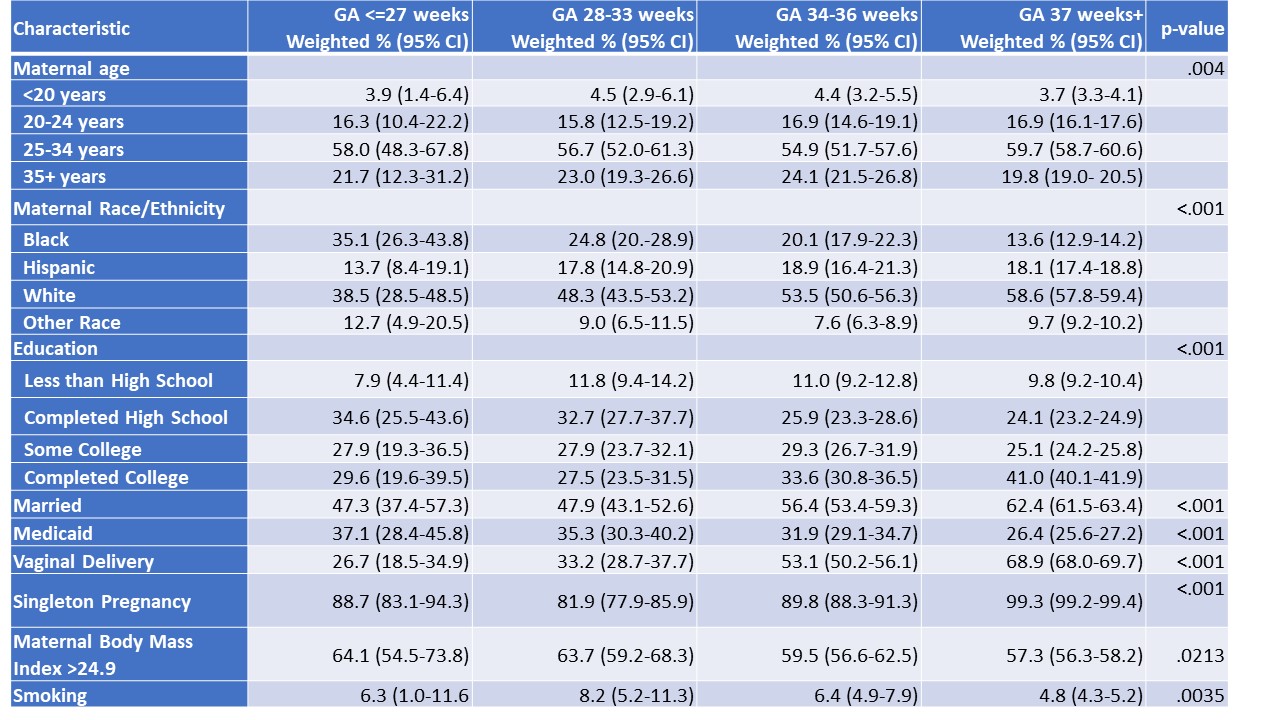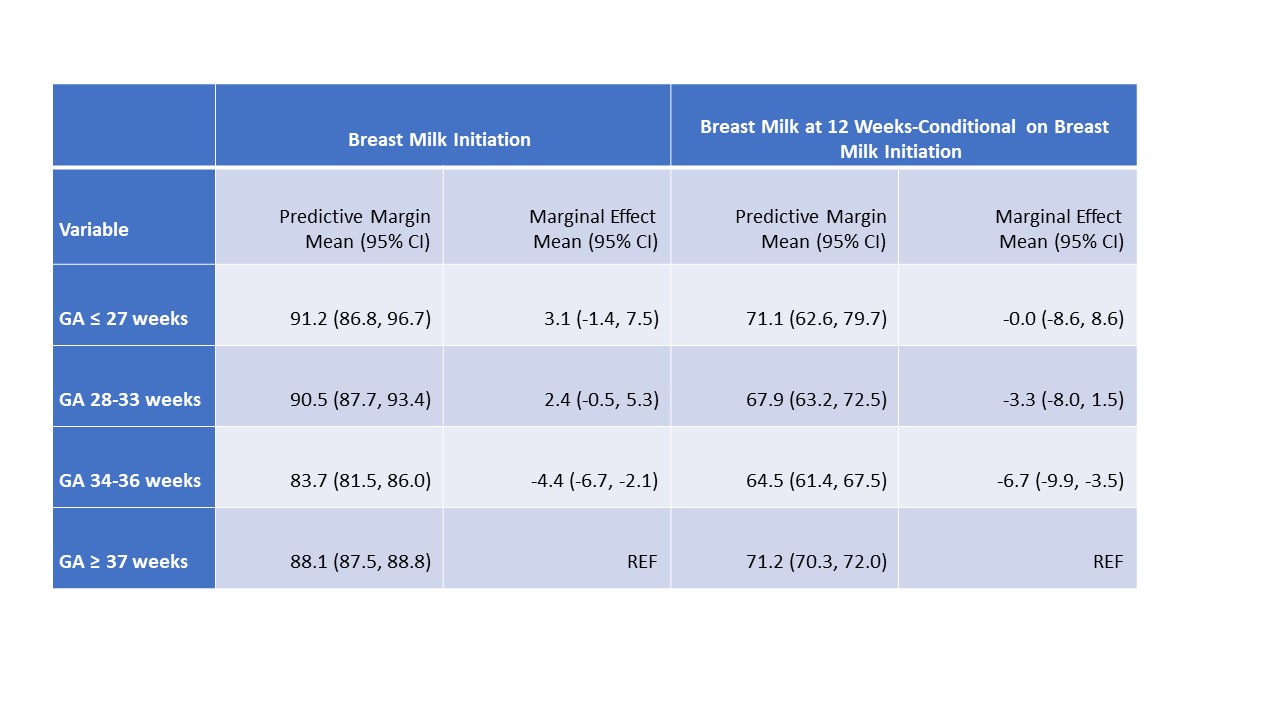Breastfeeding/Human Milk
Session: Breastfeeding/Human Milk 2: Human Milk Feeding
483 - Mother's Own Milk Provision over the First 12 Weeks: Analyzing the Impact of Gestational age in a U.S. Cohort
Sunday, May 5, 2024
3:30 PM - 6:00 PM ET
Poster Number: 483
Publication Number: 483.1832
Publication Number: 483.1832
.jpg)
Joshua A. Wilson (he/him/his)
Medical Student
Rush Medical College of Rush University Medical Center
Chicago, Illinois, United States
Presenting Author(s)
Background: Exclusive mother’s own milk (MOM) feedings are recommended through age 6 months due to the known protective effects against infantile diseases. In preterm infants, MOM is also associated with reduced rates of necrotizing enterocolitis and improved neurodevelopment. However, there are no population-based studies in the United States reporting longitudinal rates of MOM feedings based on gestational age (GA) at birth.
Objective: To compare rates of MOM provision at 12 weeks of life based on infant’s GA at birth.
Design/Methods: Data provided by the 2021 Pregnancy Risk Assessment Monitoring System (PRAMS) from 35 states were used for analysis (n=29098). Data were weighted to reflect the relative populations of each state prior to conducting analyses. Infants were categorized by birth GA ( < 27 weeks, 28-33 weeks, 34-36 weeks, 37+ weeks). Maternal characteristics included race/ethnicity, age, insurance, education, marital status, WIC use during pregnancy, delivery characteristics (mode, singleton/multiple), pre-pregnancy body mass index and cigarette smoking. Rates of 1) MOM initiation, and 2) continued MOM provision at 12 weeks conditional on initiation were then compared between GA groups. Population-weighted multivariable logistic regression models were used to examine the association between MOM outcomes and GA at birth, controlling for maternal characteristics. Adjusted predictions and marginal effects were calculated for GA groups. SAS version 9.4 and STATA version 17 were used for statistical analyses.
Results: Sample characteristics differed significantly across GA groups (Table 1). The highest rates of MOM feeding initiation were found at the lowest GA category ( < 27 weeks) (Table 2). Late preterm infants (34-36 weeks) had the lowest rate of initiation at 81.8% (95% CI, 79.5-84.1). MOM provision at 12 weeks conditional on initiation was highest in term (37+ weeks) infants at 71.6% (95% CI, 70.7-72.6). The late preterm population was 4.4 percentage points less likely to initiate MOM feeding and 6.7 percentage points less likely to continue MOM provision at 12 weeks postpartum (95% CI, -9.9 to -3.5) compared to term infants (Table 3).
Conclusion(s): MOM feeding initiation rates were lowest in the late preterm group. Adjusted analyses revealed significantly lower sustained MOM provision at 12 weeks for late preterm infants compared to term peers. This demonstrates a need for further outreach, education, and lactation support for mothers of late preterm infants to both improve infant and maternal health and increase the likelihood of reaching national and international breastfeeding goals.


.jpg)
